Relationships made for money, for political investment, and for the benefit of parents? Weddings with forced girls? The Middle Ages are much more than that. These love stories are really worth knowing.
5. Tricky drink
The legend of Tristan and Isolde, the famous pair of lovers who were united by a magical substance, is very old. It probably comes from the regions of northern France from the times when this area was inhabited by Celtic tribes. For centuries it has been passed down in the oral tradition - it belongs to the "Round Table" series of stories. It was not written in the form of poems until the mid-12th century. Unfortunately, only fragments of them have survived to our times. In 1900, the Romanist Joseph Bédier decided to merge the surviving pieces into one coherent story.
Tristan was a relative of the Cornish king, Mark. He won his sympathy. It was he who proposed the daughter of the ruler of Ireland for the royal wife. And he promised to bring the king's bride himself. Unfortunately, during the return trip there was a tragic mistake. Isolde - because she was a candidate for the queen - received from her mother an unusual drink that evoked a lifelong feeling in the drinkers. It was intended to be drunk by the spouses before their wedding night. However, the legendary lovers drank it due to the carelessness of the servant. They immediately fell in love with each other - they couldn't break away from each other!
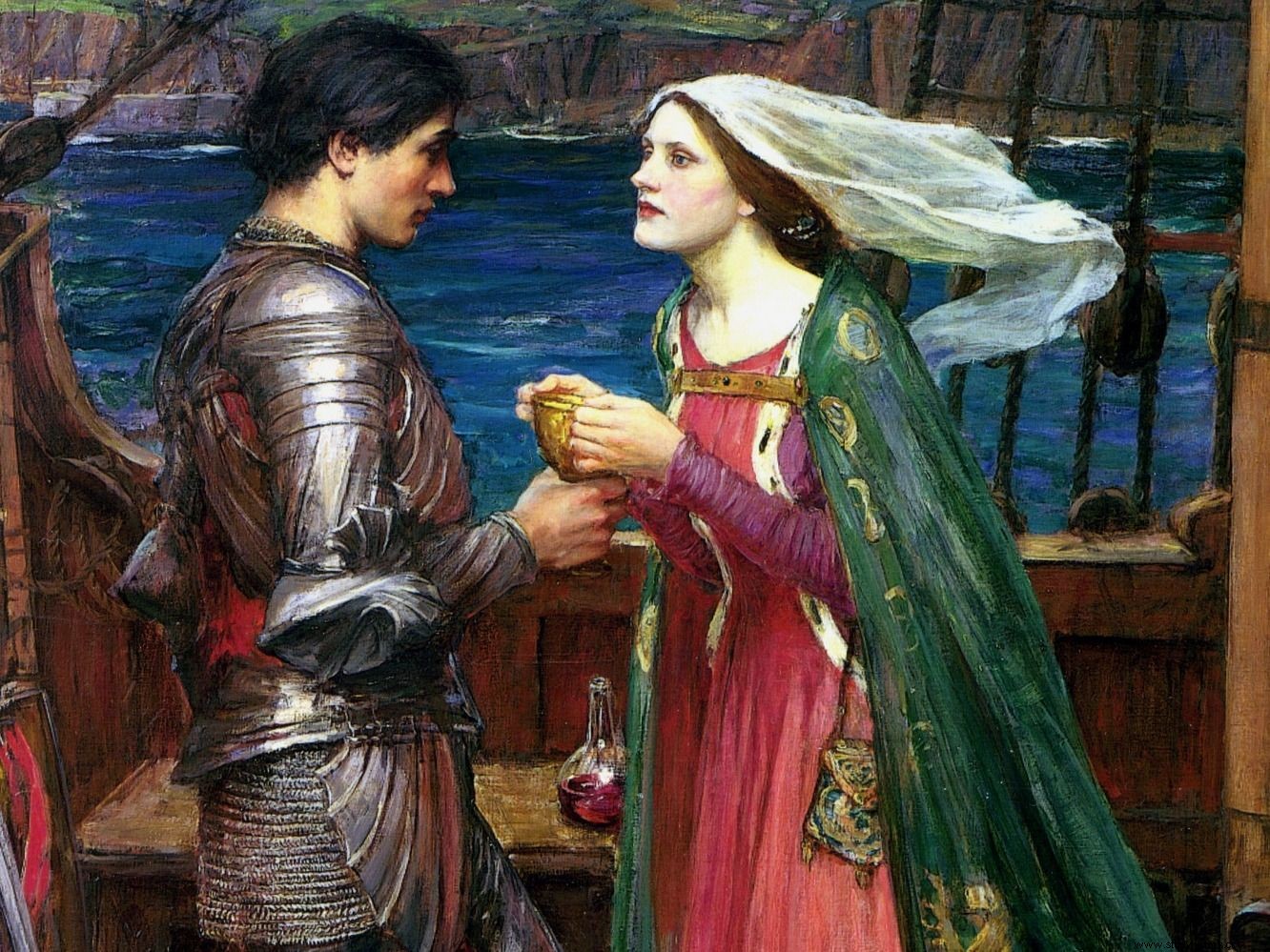
The potion made Tristan and Isolde feel a strong affection for each other and they were unable to control their passion. A painting by John William Waterhouse from around 1916.
The truth about the romance, however, could not be revealed. Isolde was still pledged to the king. The wedding took place, the barons were pleased. On the wedding night, to hide the fact that the bride is no longer a virgin, her maid, Brangien, lay down in the king's bed.
However, the lovers did not give up their secret trysts. Their account aroused more and more suspicions among the courtiers. In the end, thanks to a trick, also King Mark saw his wife's betrayal with his own eyes. Tristan was sentenced to death, but escaped a firing squad and Isolde was handed over to the lepers . Fortunately, the beloved quickly took her back. From then on, the couple hid in the Moraine forest, living without court comforts and enjoying each other.
After some time, the couple felt guilty. Iseult returned to her husband, and Tristan went into exile and married another woman, whom he treated with indifference. However, they never forgot about themselves and in the end they literally died of longing. He heard the news that he would not be able to see her before he died, and she - when she saw him dead. The hapless lovers were buried side by side, their graves entwined with branches of a magical hawthorn that would grow back every time someone tried to cut it off.
4. The white seductress
Another love story from "The Round Table" is the story of Guinevere and Lancelot. King Arthur himself "discovered" guinevere at the court of King Cameliard. Virtuous and of unprecedented beauty, she quickly won the heart of the young ruler. Merlin did warn that her name bodes badly (literally translated "white seductress") and that one day she would be betrayed by her. Arthur, however, ignored these warnings. The wedding took place shortly after.
At the court of her husband, the new queen met Lancelot, son of King Ban, the best of Arthur's knights. And she turned his head. The vile feeling that brought them together became the cause of a split at the Round Table. When the affair broke, the unfaithful suitor had to flee. An even worse fate awaited Guinevere - death at the stake.
Some of Arthur's knights assisted in the execution, as the king was aware that Lancelot would want to save his beloved. He was not mistaken. The latter returned and recaptured Guinevere, killing two former friends in the process. The ruler set out to duel, wanting to defeat his rival on his own. He had to return quickly, however, when it turned out that his nephew, Mordred, whom he entrusted with the care of his unfaithful wife, was planning to marry her himself ...
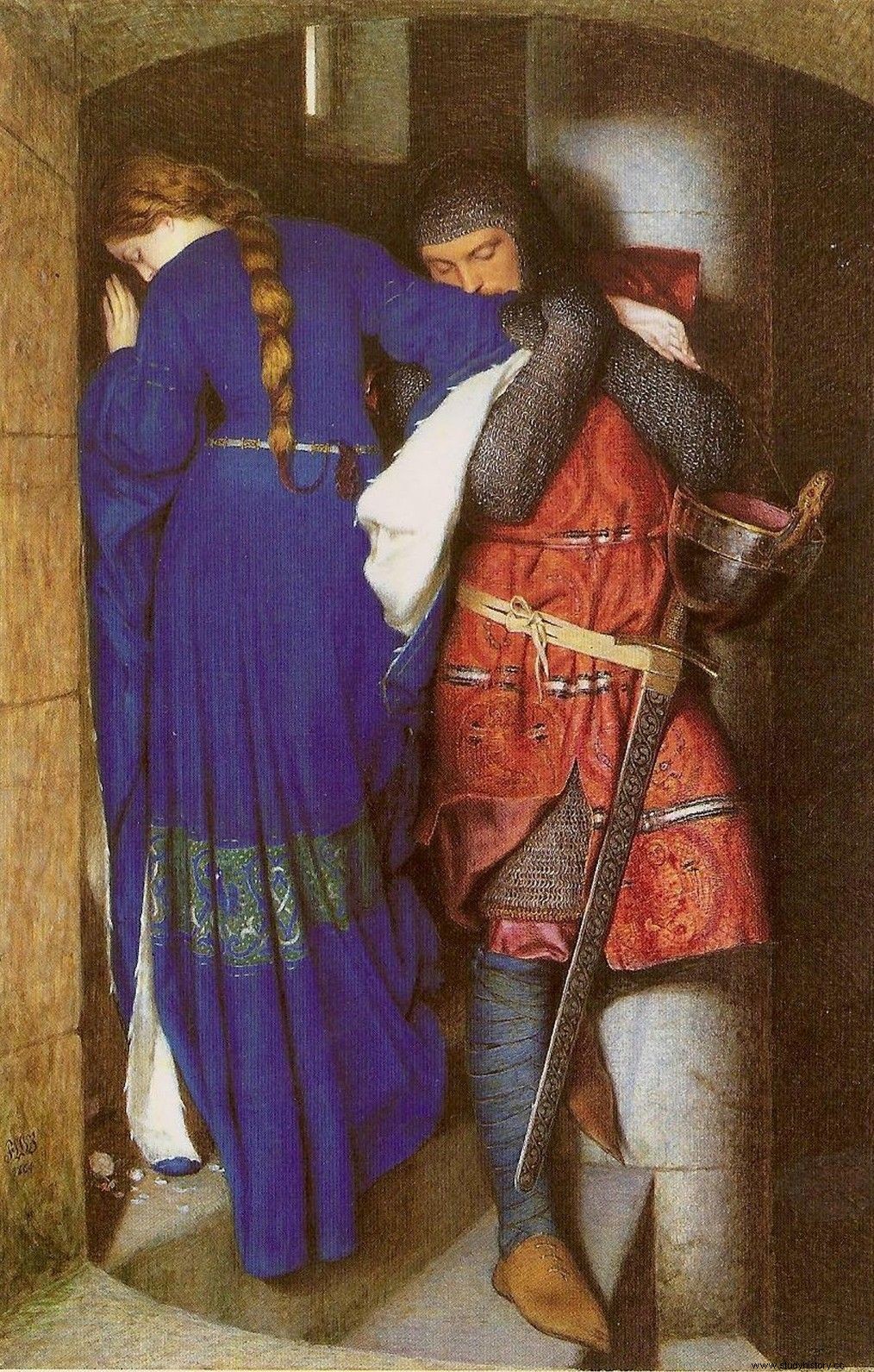
Merlin had warned Arthur that the "white seducer" would betray him with the best of his knights. Painting by Frederick William Burton "Hellelil and Hildebrand, meeting on the steps of the tower", 1864
The victory over the treacherous relative was Arthur's last great deed. The wounds he had suffered in battle could not be healed. The dying king left for the mysterious island of Avalon. What happened to lovers? Guinevere took her monastic vows and hid her sorrow behind the walls of the monastery. Lancelot resolved to atone for his sin and became a saintly hermit.
3. Nun and philosopher
We know the history of the most famous medieval romance thanks to a chance discovery. In 1270, copies of the letters were found in the monastery of Paraclete in Champagne, whose superior was a certain Heloiza. The letters were addressed to the great thinker Peter Abelard. The writings ended up in the hands of John of Meung, and he incorporated the story emerging from the correspondence into his poem A Novel of a Rose . Thanks to this, the history of the couple soon became widely known.
Abelard was one of the most famous medieval philosophers. Crowds came to his lectures on theology and dialectics. At the age of 40, he met Heloiza, who was half his age. The girl lived in the center of Paris, in the house of her uncle, the canon. She charmed the scientist not so much with a beautiful face, but with incredible erudition and depth of thought. As Piotr wrote in one of his letters:" Even if she was not the most beautiful in terms of beauty, she had no equal for the richness of her knowledge ". In fact, Heloiza was extremely educated:she was fluent in Latin, knew classical literature very well, was interested in philosophy.
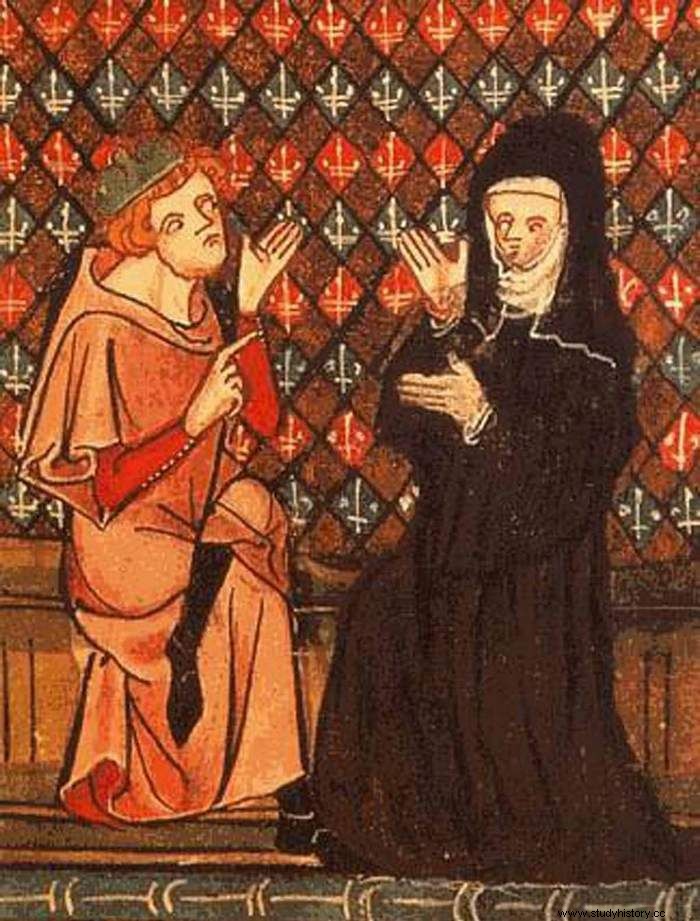
Abelard and Heloiza, illustration from the 14th-century manuscript of "The Novel of the Rose".
Piotr soon found a clever way to get closer to his chosen one. He proposed to Uncle Heloiza Fulbert that he should take him under his roof for a proper payment. He also began giving Heloiza lessons in philosophy. It has to be admitted, however, that science has not always gone well. "There was more love than science over the open scrolls, more kisses than learned sentences," wrote the teacher. And further:" In love, we went through all levels of love, fulfilling every madness of a fantasy played (…) ”.
The feeling could not be hidden for long. Fulbert learned of the indecency under his roof and ordered the relationship to end immediately. But it was too late - Heloiza was pregnant. Abelard took her to his brother's house, and some time later he made an agreement with the girl's uncle. It was advised that those in love in secret would marry, but would live separately. Soon this plan also took a toll. Since the older relative was still reproaching the niece, the philosopher took his beloved from Paris once again, this time to the convent in Argenteuil.
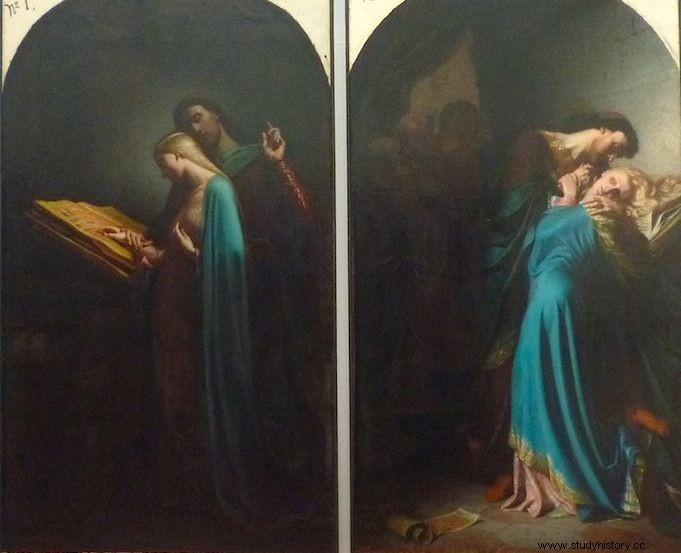
"There was more love than science over the open scrolls, more kisses than learned sentences." Léon-Marie-Joseph Billardet, "Abelard Teaching Helois" and "Abelard and Heloiza Surprised by Fulbert", diptych from 1847.
This made Fulbert very angry. He hired the right people who sneaked into Abelard's house at night and stripped him of his masculinity in an act of revenge . The situation became loud all over Paris. The humiliated and broken scholar decided to enter the law, and he ordered his wife to do the same. It was not the end of his misfortunes. He was declared a heretic by the verdict of the Synod of Soissons in 1121. He had to go into hiding until the end of his life. Love, however, has withstood all trials. The lovers were buried together in the church crypt in Paraclet.
2. Horoscope in the service of France
The situation in France around 1420 was tragic. The country was ravaged by the English, and thanks to the treaty of Troyes, Paris was in the hands of the invader. The French were seized with panic fueled by reports of the enemy's atrocities. Meanwhile, Charles VII sat on the throne, a ruler who thought more about dancing than ruling.
The royal court moved to Chinon Castle. There, one day the king was visited by Duchess Isabella Lorraine. She wanted to plead with him for help in freeing her captive husband. She managed to achieve her goal thanks to ... one of her mansions, Agnès Sorel. The girl stood out in the princess's retinue with her exceptional beauty and character. Isabella decided to use her to manipulate the king.
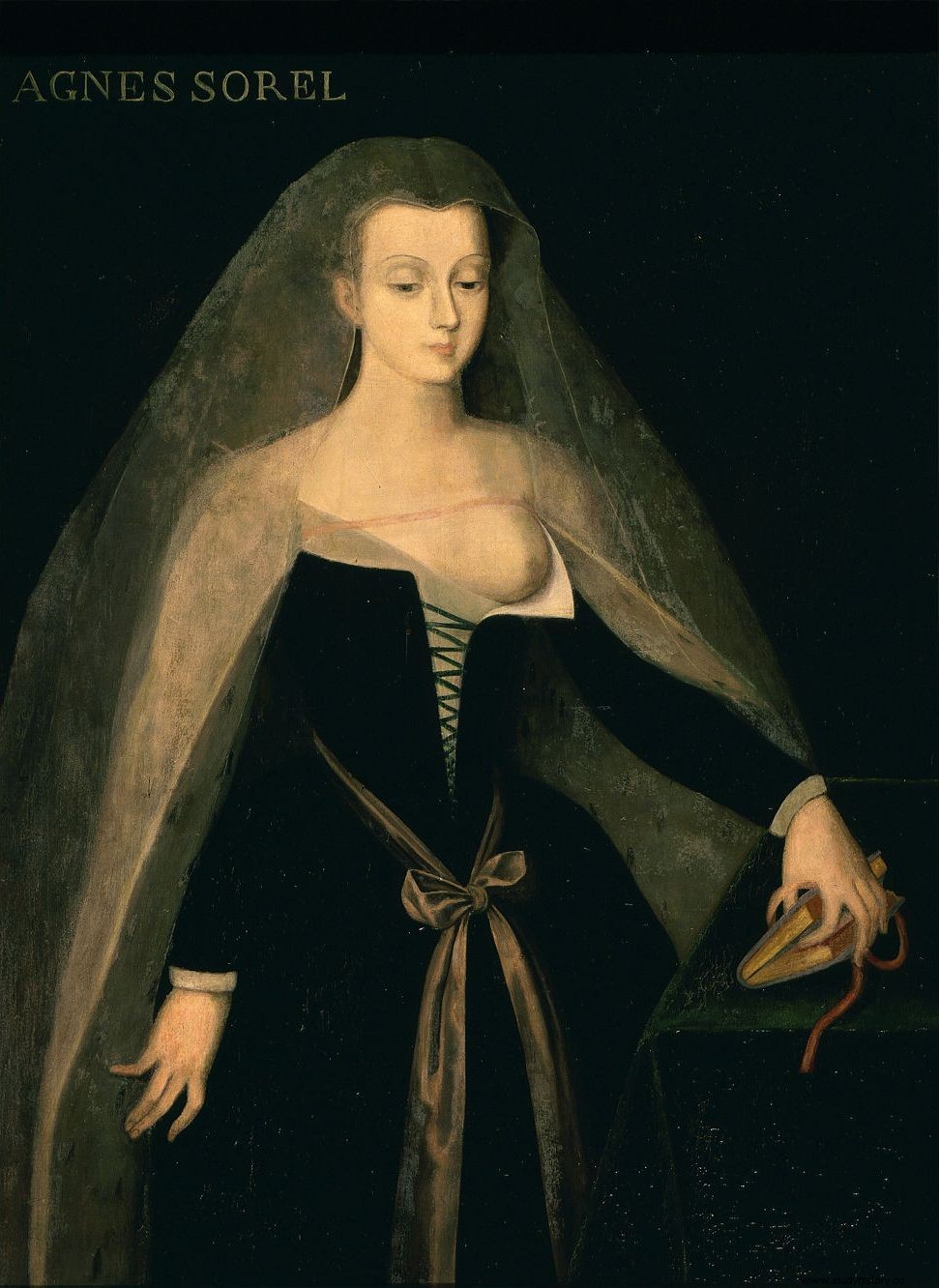
Philippe Comairas, "Agnès Sorel, dame de Beauté", 1834.
The intention was successful and, as Duchess Agnès had intended, she remained in Chinon as Charles' lover. They were united by a great affection, accepted even by the king's legal wife. Charles showed his feelings by showering his chosen one with jewels and dressing her up in expensive clothes. It evoked the disgust of the subjects. The king was believed to spend a fortune on his debauched mistress, while France was drowning in debt.
It was a damaging rumor, because Agnès did not care about riches at all. She had sincere affection for the king. Above all, she wanted to save the country. Every day she persuaded the French ruler to go to war, but he preferred to fight in the bedroom.
So the influential courtly resorted to deception. She told her lover that the horoscope told her that she would be loved by the most powerful ruler in the world . So he must… leave Charles and go to the King of England. After all, he was in fact the most powerful after taking over French territory. The enraged lover ran out of the room and shut himself up in his chamber. But the next day there was a clang of weapons in the courtyard - the king finally went to war with the English.
1. Desperate princess
Great feelings also tormented the Polish court. Jan Długosz described in Annals, or Chronicles of the famous Kingdom of Poland a youthful feeling between the young Jadwiga Andegaweńska and Wilhelm Habsburg, promised to her in her childhood. Although the truth of the presented events is debatable, the chronicler's story is undoubtedly a colorful example of what "puppy love" might have looked like in the Middle Ages.
During his lifetime, Ludwik Węgierski promised to give his daughter Jadwiga Wilhelm, the prince of Austria. When the girl came to Krakow with the entire retinue and was ceremonially crowned the king of Poland, the fiancé decided to stand up for hers. Or maybe the young ruler herself participated in bringing it to Krakow? The fact is that Wilhelm stayed with the chamberlain of Krakow Gniewosz from Dalewice and stayed in the city for quite a long time.
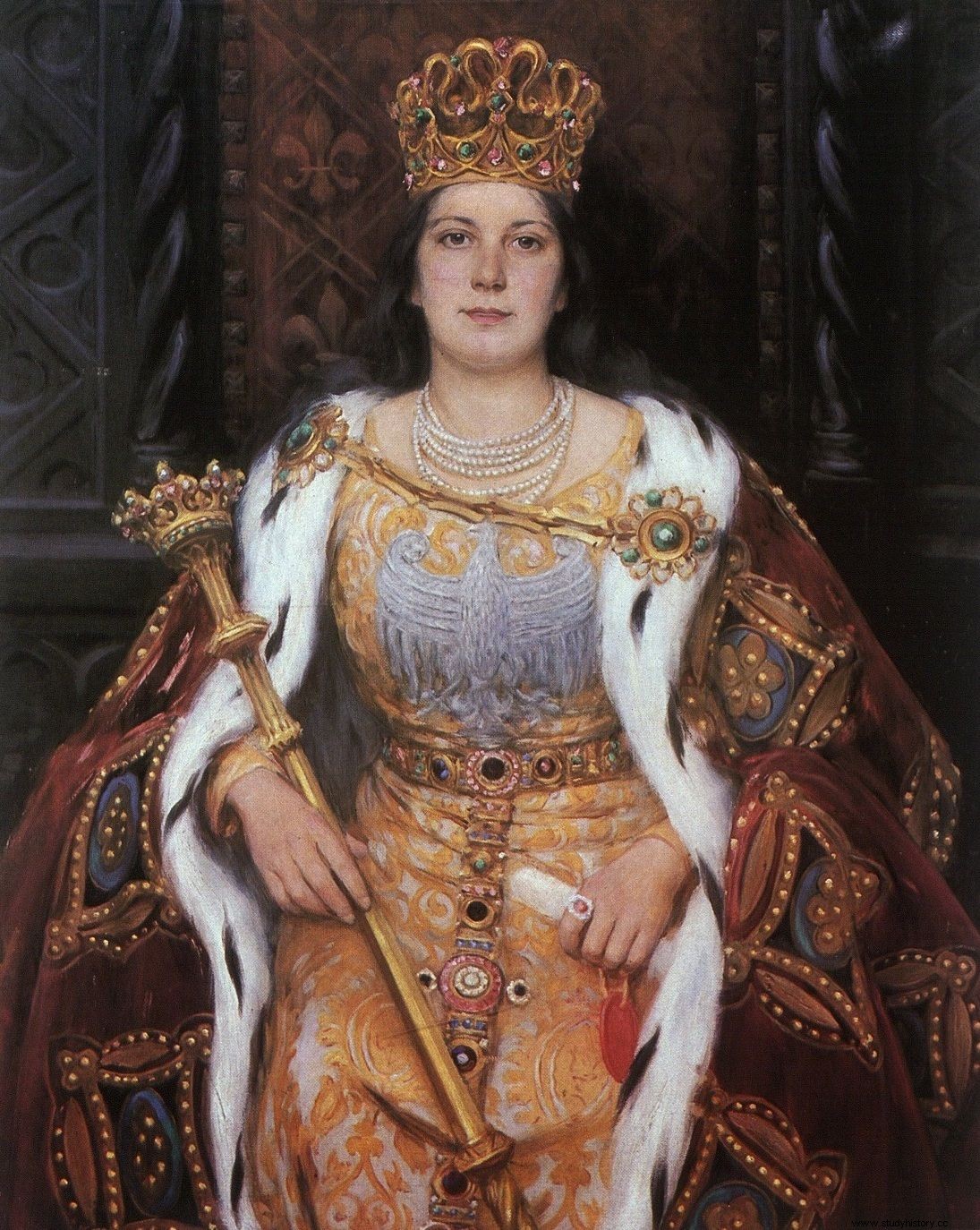
"Queen Jadwiga Andegaweńska", a painting by Aleksander Augustynowicz from around 1925
Jadwiga "remembered her father's disposition, and the kindness and graceful qualities of a young man, well-known and intimate, wanted to be married more than a foreign pagan whom she had never seen ”(That is Władysław Jagiełło). Some courtiers and lords encouraged her to do so, especially Gniewosz, who promised William a positive settlement. The other gentlemen, however, were not so pleased. The prince was forbidden to enter the castle walls. From then on, the young people met in secret in the convent of St. Francis.
During the meetings, Jadwiga "entertained herself cheerfully and dances, but modestly and with the greatest decency", as the chronicler emphasizes. The case was closed when plans began to supplement the relationship with Wilhelm with the "marriage matter". The lover was ruthlessly driven out of the castle where he had come to share the bed with his fiancée. Even an ax did not help the ruler which she grabbed from the hands of the servants to get out through the castle gates…
***
You can also read about the obstacles that might have stood in the way of lovers in medieval France in Jeanne Bourin's book "The Great Fire" (Noir sur Blanc 2017).
Bibliography:
- Celts ( World Mythologies, Bar 4) , aut. texts:Liliana Olchowik-Adamowska, New Media Concept 2007.
- Joseph Bedier, The Story of Tristan and Isolde , trans. Tadeusz Żeleński (Boy), PIW 1982.
- Peter Abelard, Abelard and Heloiza. Lists , trans. Leon Joachimowicz, PAX Publishing Institute 1968.
- James Burge, Abelard and Heloiza , trans. Małgorzata Szubert, Świat Książki 2005.
- Jadwiga Dackiewicz, The favorites of the rulers of France , Lublin Publishing House 1983.
- Jan Długosz Annals or Chronicles of the famous Polish Kingdom. Fr. 10 and 11, 1406-1412 , trans. Julia Mrukówna, PWN 1982.
